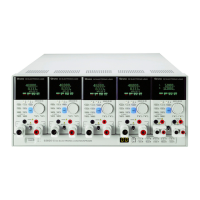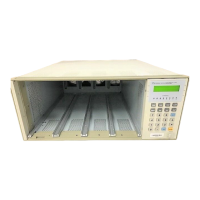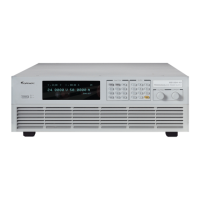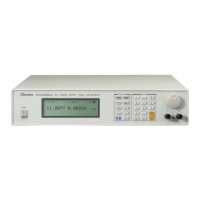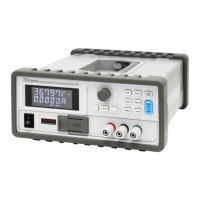Remote Operation
5. Remote Operation
5.1 Overview
The 62000H Series DC Power Supply can be controlled remotely via the USB, GPIB,
Ethernet, RS-232 or RS-485 ports.
The USB interface supports USB 2.0/USB 1.1. The GPIB interface is an 8-bit parallel data bus
that synchronizes with the host bus commands. The Ethernet interface is used in a local area
network for data transmission. RS-232C is a serial bus with less powerful functions; however,
remote control is easy via simple programming.
5.1.1 USB Interface
(1) Hardware Support: USB 2.0 and USB 1.1
(2) Software Support: USBTMC class and USB488 subclass
(3) OS Support: Windows 98/2000/XP/Vista/Windows 7/Windows 8
(4) Installing Driver: The 62000H Series USB Interface supports USBTMC, so if the
PC OS supports USBTMC (installed NI-VISA runtime version
3.00 or above) there is no need to install other drivers. The OS
will search for the standard USBTMC driver installation program
automatically.
If the PC OS does not support USBTMC, install the NI-VISA runtime version 3.00 or above
first. When the installation of NI-VISA runtime is done, the USBTMC driver program is stored
in the OS. The PC can communicate with the 62000H Series via NI-VISA after connecting
the USB cable.
Related Documents:
1. USB Test and Measurement Class (USBTMC) specification, Revision 1.0,
http://www.usb.org
2. USB Test and Measurement Class USB488 subclass specification, Revision 1.0,
http://www.usb.org
5.1.2 Setting GPIB, Ethernet, RS-232C & RS-485
Parameters
See section 3.3.8.
5.1.3 Connecting RS-232C
The default baudrate of the 62000H Series DC Power Supply is set to 115200 and the parity
check is set to None. Only TxD and RxD signals can be used for data transmission. The
RS-232C connector is a 9-pin D type male connector. Table 5-1 lists the pins and signals of
the RS-232C connector.
